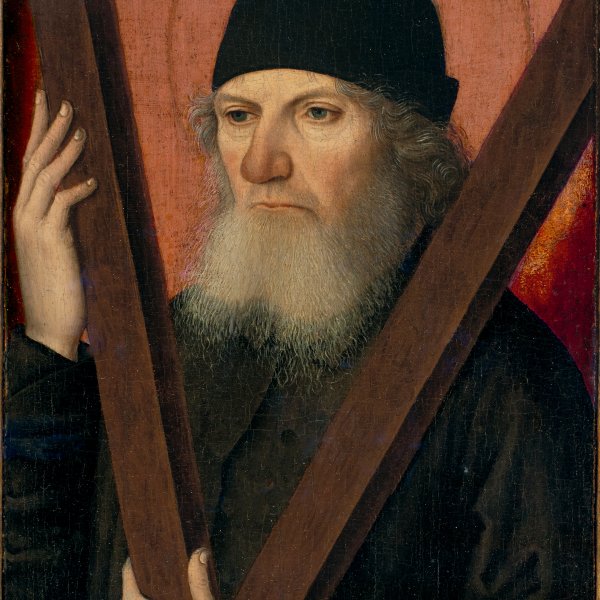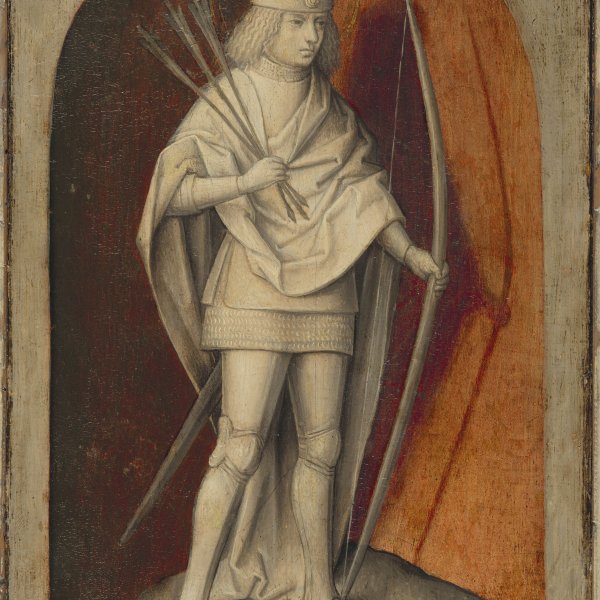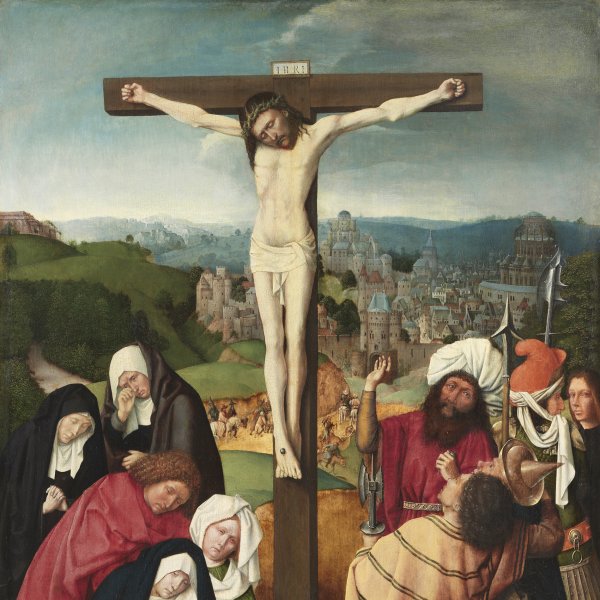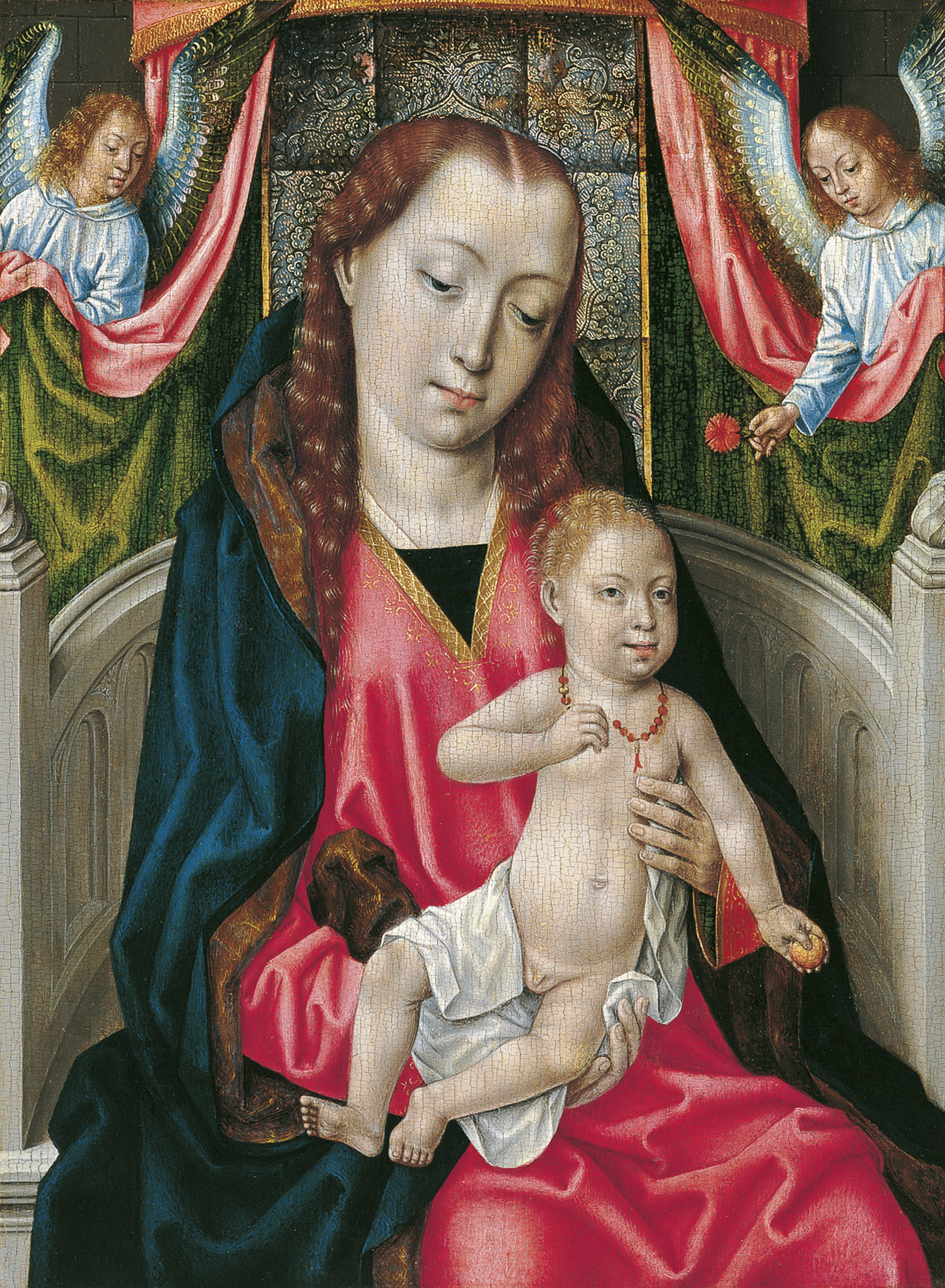The Virgin and Child with Two Angels
The name given to the Master of the Legend of Saint Ursula derives from the eight panels depicting the legend of that saint, now in the Groeningemuseum in Bruges. It is likely that this anonymous painter lived for a while in Brussels and later moved to Bruges as his style includes references to Rogier van der Weyden, Hugo van der Goes and Hans Memling. In the present work the artist has based his composition on Saint Luke painting the Virgin and Child by Van der Weyden, now in the Museum of Fine Arts, Boston. The Virgin, seated on an architectural throne, delicately holds the Christ Child, while the composition is completed by two angels who hold up the throne’s canopy. Various objects have a symbolic significance: the apple refers to Christ’s role as Saviour of Mankind, while the red petals of the carnation allude to the Crucifixion. Also notable is the coral necklace around the Infant’s neck, an object that appears in medieval paintings and which was considered an amulet against the Evil Eye. In addition, coral was thought to have curative properties.
NR
The model used for this composition is a panel by Rogier van der Weyden of Saint Luke painting the Virgin and Child (Museum of Fine Arts, Boston). In the present panel the anonymous artist has located the Virgin in a frontal pose, holding the child with a cloth as a sign of respect. She is depicted seated on an architectural throne whose semi-circular back occupies the entire width of the panel while the background is created from a narrow but costly cloth with a foliate and geometrical pattern. The composition is completed by two angels that hold the curtains of the throne canopy, which forms the uppermost element of the composition. The painter has emphasised two objects that refer to Christ’s destiny as Redeemer of mankind: the apple held by the Child and which indicates that he acknowledges his tragic destiny, and the pink offered to him by the angel. The apple refers to Original Sin and to Christ’s role as Saviour of mankind who is made free through his death. The petals of the pink refer to the nails of the crucifixion and the flower thus refers to Christ’s future Passion, as does its red colour. Christ wears a coral necklace, playing with the beads in a way that attracts the viewer’s attention. Coral necklaces, which were believed to be made from a material that had curative and talismanic qualities, were depicted in medieval paintings. Coral was thought to ward off the evil eye.
The artist used this composition with slight variants in the diptych now in Antwerp referred to above and in a painting in the Los Angeles County Museum. The present panel was previously in the collection of Prince Hohenzollern-Sigmaringen.
Mar Borobia





